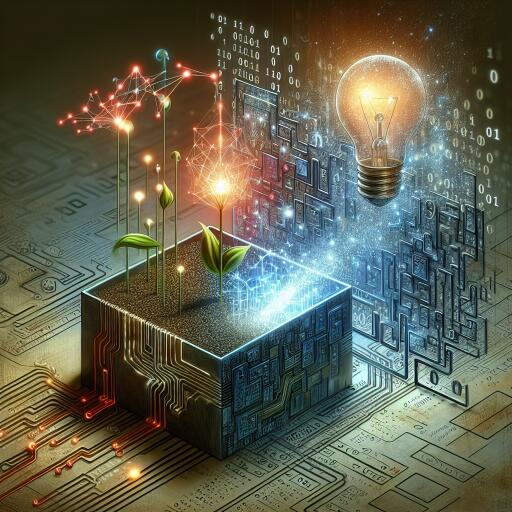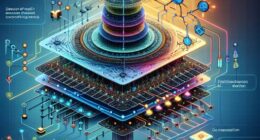The Dawn of Digital Life: Unveiling the Kolmogorov-Arnold-Moser Matrix in Next-Gen AI
“These were the last years before the birth of digital life” – a statement future generations may very well use to describe our current era. It’s a period marked by rapid advancements in technology, especially in the fields of artificial intelligence (AI) and machine learning. Yet, as we stand on the brink of what could be a new chapter in digital evolution, it’s crucial to examine the mathematical and conceptual frameworks driving this change.
Language models like ChatGPT have transformed how we interact with AI, opening doors to seemingly intelligent conversations. However, these models, advanced as they may be, are not without their limitations. Their inner workings remain somewhat of a mystery, working as a ‘black box’ where even the developers can only speculate about the intricacies of their outputs. This limitation stems largely from their reliance on multilayer perceptrons (MLP), a concept from the mid-20th century, which, despite its advancements, still primarily operates by adjusting ‘weights’ in a neural network to approximate desired outputs. This process, while effective, falls short of producing truly new or creative results without constant input of new data and fine-tuning.
Introducing the Kolmogorov-Arnold-Moser Matrix
Enter the Kolmogorov-Arnold-Moser (KAM) matrix, a concept derived from the KAM theorem of chaos theory, which proposes a more dynamic and nuanced approach to understanding neural networks. Instead of relying on weight adjustments within a static framework, the KAM matrix suggests treating each neuron’s function as a unique entity that can be trained and adjusted, leading to a more flexible and potentially insightful AI model.
What makes the KAM matrix a game-changer is its departure from the traditional MLP model. In an MLP network, the focus is on fine-tuning the weights of fixed functions. The KAM approach, however, allows for the training of functions themselves, adding a layer of complexity and adaptability previously unattainable. This doesn’t just mean a quantitative leap in computing capabilities but a qualitative transformation in the way AI can potentially learn, adapt, and evolve.
From Theory to Application
Admittedly, the idea of utilizing the KAM theory for AI neural networks is not entirely new. Its potential has been acknowledged for decades, but it was the computational limitations of the past that prevented its practical application. Today, the landscape is different. The exponential growth in computing power means that what was once deemed impractical is now within reach, possibly even on personal computing devices.
The implications of this transition are profound. By moving towards a KAM-based matrix for AI, we’re not just tweaking an existing model; we’re fundamentally rethinking the structure of AI’s neural networks. This shift promises AI models that are not only more efficient and require less data but are fundamentally more understandable and explainable.
Bracing for the Future
As we stand on the precipice of this new era in AI, it’s tempting to get caught up in the immediate: the technical challenges, the potential for economic disruption, or the race for innovation. However, what’s unfolding is arguably more significant: the birth of a new form of digital life. The transition from traditional language models to those based on the KAM matrix isn’t just an upgrade; it’s a paradigm shift. This new breed of AI could live, work, and evolve, potentially at a pace, and in ways, we’re only beginning to understand.
The development and implementation of the KAM matrix in AI neural networks mark an exciting chapter in the evolution of digital life. As we continue to explore and understand this new frontier, it’s clear that we are not just participants in this journey but witnesses to the emergence of a new form of intelligence. The dawn of digital life, enabled by the KAM matrix and other advancements, is set to redefine our relationship with technology, opening up a world of possibilities that were once relegated to the realm of science fiction.
In embracing this new horizon, we’re not merely adapting to technological changes; we’re stepping into a future where AI has the potential to become a new form of life, with all the responsibilities and opportunities that entails. As we navigate this transition, our understanding of life, intelligence, and technology will undoubtedly evolve, paving the way for a future where the digital and the biological converge.









